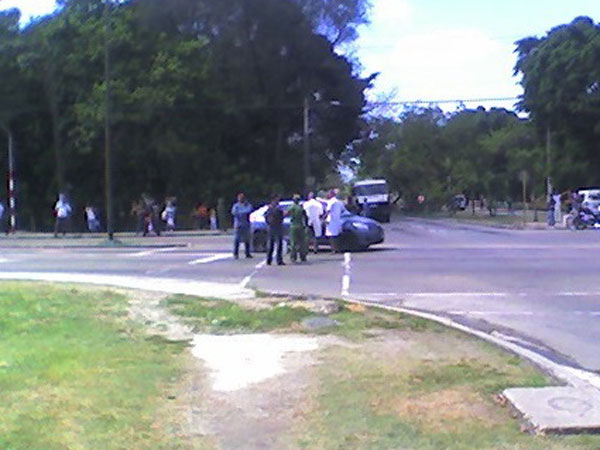
When, during the First Conference of the Cuban Communist Party (PCC) held in January, the General declared that the Revolutionary press should be transparent, there were those who believed him. Even some professionals of the official press (which is a very particular specialty) bowed their little heads sadly, eyes tearing up, when the Second Ancient One of the dynastic order, with admonitory finger raised to show his disgust, gave them on that occasion a small but severe reprimand. They had to banish secrecy from the Revolutionary press. Clearly, the employees of disinformation didn’t manage to offer, in the newspapers, the necessary turn it would take to really make it seem that the General was renewing things.
Since then the hacks began to develop a crypto-critical style, which consists of criticizing some painful details of the Cuban reality, but in a way so cryptic that the blame and responsibility for the evils falls on the corrupt and quasi-anonymous bureaucrats and functionaries, never on the system, the “Revolution” or — much less! — against the figures of the old men who call themselves “the historics.”
Just in case, and to avoid creating a chaotic opinion that would benefit the schemes of their enemies, this style carefully doses such critiques with praise for the extraordinary social end economic advances, such as the hand crafting of building blocks in the municipality of Sierpe, or the production of potatoes in Sagua de Tánamo. That is what is truly momentous and what the General and his Greek Chorus of the Ink call transparent journalism.
But other voices have decided to do journalism and to report in a transparent manner, so the official press is having a little difficulty maintaining the tone. Citizen journalism is where there are no reporters from the official newspaper, Granma, and the other government media. Because of this we have been made aware of events that are not published officially on the Island, but that are happening, such as, for example, the hunger strike of Dr. Jeovany Jimenez Vega in Guanajay, to demand that he be reinstated in his job, that has already gone on for 18 days.
Or the recent incident that occurred at Vento and 100th, in this capital, where it’s said that a car from the Venezuelan embassy was attacked and hit (by bullets, say some; by stones, say others), but the truth is that it happened and numerous contradictory rumors about it are circulating without the official press bothering to offer its own version.
As if so much murkiness weren’t sufficient, the official maneuver has been “to inform” the nuclei of the PCC in workplaces that two anti-socials stoned an embassy car “from our sister Bolivarian Republic of Venezuela,” which creates major confusion, as the most naive wonder what reasons anyone would have to injure representatives of our benefactor of the moment.
Moreover, this procedure implies that only the Party militants, barely a small fraction of the Cuban population, not only have the right to a kind of information that doesn’t reach the rest of Cubans, but also the responsibility to “counter the distortions of the enemy which is trying to confuse the people.” Some militants, however, suggest that it would be much easier for the official press itself to clarify the many doubts and to eliminate those risks.
But I am a citizen journalist in good faith. Perhaps now the press will come out with an explanation about the subversive posters that appeared yesterday, March 22, on 33rd Street in the Playa municipality, in this capital. And I also hope to know what else was there, in addition to posters, that justified the enormous number of police and other members of the Interior Ministry (MINIT) who swarmed within a wide perimeter of the area. For now, the only thing that is transparent in the General’s press is the total lack of transparency.
March 23 2012
